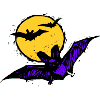Wildlife Disease and Zoonotics

Zoonotics and Wildlife Disease: Publications
Document Type
Article
Date of this Version
January 2004
Abstract
The presence of Chronic Wasting Disease (CWD) in free-roaming and domesticated cervine animal populations of deer and elk in the state of Nebraska presents a threat to the natural resources of the state. The presence of this disease could drastically restrict the successful achievement of the goals and objectives of the Nebraska Game and Parks Commission (NGPC) as set forth in their long range plan “Focusing on the Future…A Plan for Nebraska’s Fish, Wildlife and Parkland Resources”. Objective 3 in the Big Game section of this plan is to “Monitor the status and health of deer, so reasonable assumptions may be made annually regarding population levels.” Strategy 2 of this objective is “Collect and maintain biological information representative of herd health”. Any successful deer and/or elk management program maintains an up-to-date knowledge of herd health to assist in making management decisions regarding harvest recommendations to control population levels. Additionally, the practice of maintaining private herds of cervids (deer and elk) for economic gain by individuals has become a common practice of the alternative agriculture community. The monitoring of these operations for herd health status is vital in protecting both the free-roaming populations of cervids and the financial investment of private individuals in their agricultural operations. Questions of environmental contamination from wildlife disease issues and perceived or real human health issues require the involvement of agencies not routinely involved with issues of NGPC and require multi-agency collaboration and consensus. CWD is one of a family of diseases known as Transmissible Spongiform Encephalopathies (TSEs). Other diseases in this group include bovine spongiform encephalopathy (commonly called mad cow disease or BSE), scrapie in sheep, transmissible mink encephalopathy (TME), feline spongiform encephalopathy (FSE) in both domesticated and zoo cats and Creutzfeldt-Jakob Disease (CJD) in humans. The occurrence of CWD in free-roaming and domesticated cervine animals in Nebraska has the potential to cause severe economic impacts to the state and to individual citizens that depend on this resource for part or all of their annual income. Maintaining the physical separation of free-roaming and captive cervids is necessary for disease prevention on both sides of the fence. If public concern becomes severe enough, the sale of deer permits could decrease to a point that will drastically impact the annual budget of NGPC. Private individuals that operate business concerns in areas where hunters contribute a significant amount to their annual income would feel an even greater impact. The 2002 National Survey of Hunting, Fishing and Wildlife Related Recreation indicates that the big game hunting related income to Nebraska is $250,000,000. The restrictions placed on commercial breeders of cervids would cause a total loss of their investments and income potential if movement of their product is prevented.


Comments
Prepared by the Nebraska Game and Parks Commission, with the cooperation of Nebraska Department of Agriculture, Nebraska Department of Environmental Quality, and Nebraska Health and Human Services.